Innovate beyond 5G with

Rich library of functions and modules for simulation,
research and development in 5G and beyond wireless systems

What is 5G Toolkit?
5G-Toolkit is a rich library of functions and modules in Python based on NumPy to design algorithms for 5G and Beyond wireless systems.
It implements 3GPP standards-compliant downlink and uplink chains
to perform multi-cell, link level and system level simulations.
It implements 3GPP standards-compliant downlink and uplink chains
to perform multi-cell, link level and system level simulations.
What is 5G Toolkit?
5G-Toolkit is a rich library of functions and modules in Python based on NumPy to design algorithms for 5G and Beyond wireless systems. It implements 3GPP standards-compliant downlink and uplink chains
to perform multi-cell, link level and system level simulations.
What is unique about 5G Toolkit?
3GPP R-17 compliant
Support Plug and Play
Quaterly Updates
Scalable Performance
Built Using Python
Highly Modular Design
What you can do with 5G Toolkit?
Industry
-
 Perform network design & optimizationRead more
Perform network design & optimizationRead more -
 Build IP Portfolio for B5G Radio Access Network.Read more
Build IP Portfolio for B5G Radio Access Network.Read more -
 Leverage AI to Enhance B5G Networks.Read more
Leverage AI to Enhance B5G Networks.Read more -
 Test your L1, L2 and L3 stacks for 5G networksRead more
Test your L1, L2 and L3 stacks for 5G networksRead more -
 Standards based Research for upcoming Wireless TechnologiesRead more
Standards based Research for upcoming Wireless TechnologiesRead more -
 Explore research opportunities for 6G Networks.Read more
Explore research opportunities for 6G Networks.Read more
Academia
-
 Organise student trainings, and FDPsRead more
Organise student trainings, and FDPsRead more -
 Teach 5G Technologies using projects and lab experimentsRead more
Teach 5G Technologies using projects and lab experimentsRead more -
 Publish standards based research on B5G TechnologiesRead more
Publish standards based research on B5G TechnologiesRead more -
 Setup 5G/6G Wireless Communication LabsRead more
Setup 5G/6G Wireless Communication LabsRead more
What 5G-Toolkit can do?
Scheduler Design
Scheduling multiple UEs with different payload size and QoS requirement based on channel conditions.

Forward Error Correction Codes Design
Design new codes to improve the reliability for diverse packet sizes and rate-match the different input sizes to different output sizes.
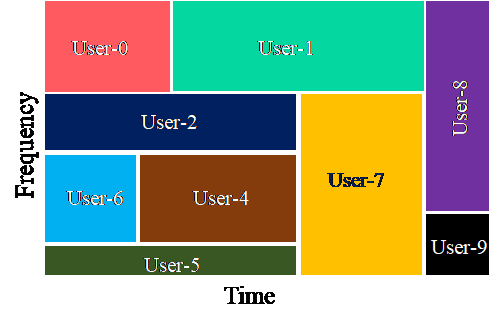
Resource Allocation and Optimization
Resource allocation schemes for different use-cases with large number of devices, low latency, high throughput requirements.
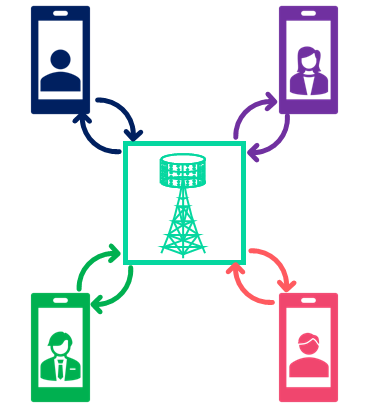
Multi-user MIMO Design and Optimization
Design algorithms to reduce the IUI in DL for MIMO systems based on accurate channel estimation, precoder selection & beamforming.
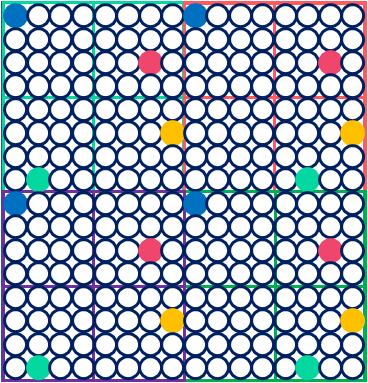
Precoder Design and Selection
Design precoder for SU/MU-MIMO to achieve beamforming gain with low interference and low feedback reporting overhead.
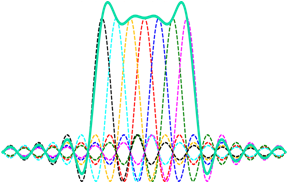
Waveform Design
Design and testing a new waveform as well as optimizing the OFDM waveform to minimize the ACLR and PAPR.

Beam-Management and Optimization
Design methods/algorithms for selection of best transmit and receive beam pair for a moving base-station/user-equipment.
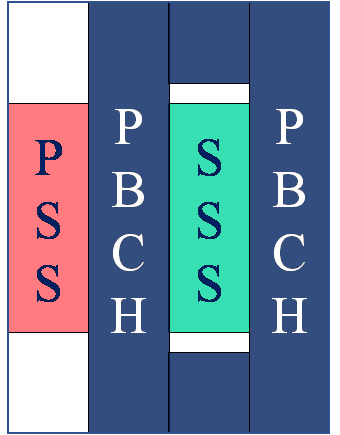
Initial Access Enhancement
Simplify the process of initial access for narrow-beam operation in-terms of connection establishment time and power consumption.
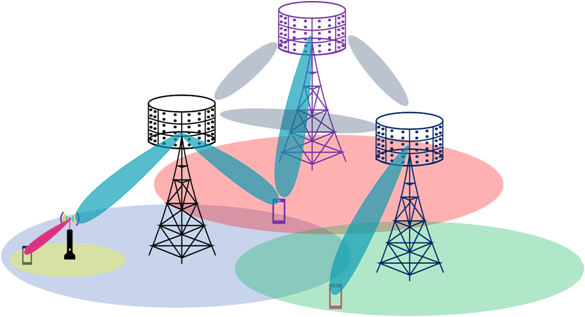
Fronthaul and Backhaul Design
Design high speed interfaces between the radio resource unit and base-band unit and between radio access network and core Network.
5G-Toolkit enables evaluation and optimization of high precision positioning algorithms and systems. It simulates environmental factors, tests interoperability with autonomous vehicles and IIoT, aiding researchers and engineers.
5G-Toolkit simulates traffic patterns and scenarios to evaluate synchronization algorithms and systems. It models signalling and control mechanisms like SRS and TA commands for establishing and maintaining uplink/downlink synchronization.
5G-Toolkit facilitates testing and evaluation of machine learning and intelligent algorithms for optimizing flexible TDD/FDD resource allocation. It supports historical data-based predictions and enables efficient uplink/downlink resource selection and allocation in wireless communication systems.
V2X Communication enables the vehicles to communicate with infrastructure (V2I), pedestrians (V2P), networks (V2N) and other nearby vehicles (V2V). This helps in enhancing road safety via cyclist and pedestrian detection, optimize the mobility via platooning, positioning and sensing, and enhanced broadband connectivity for remote and autonomous driving requiring low latency and very high reliability. 5G-Toolkit can implement the dual mobility (both transmitter and receiver are mobile) with user defined routes for simulating the V2X links. It implements 5G standards for sidelink, multiple access, LBT to simulate the V2X network in all the 4 modes supported by 3GPP. The users can analyze the latency and reliability of their algorithms on system level to check the suitability of their methods for V2X.
5G-Toolkit supports configurable reference signals for channel and system impairments. It enables transmission of data (payload) and reports corresponding measurements, accounting for processing and reporting delays in simulations.
The massive MIMO, wide bandwidth of signals and small cells has enabled the 5G networks to provide centi-meters level positioning accuracy. Our 5G-Toolkit allows the users generate the positioning reference signals (PRS and SRS-P) for estimating the position of a device using various state of the art algorithms in downlink and uplink, respectively. The 5G-Toolkit supports time of arrival (ToA), time difference of arrival (TDoA), angle of departure (AoD), angle of arrival (AoA), multi-round trip time (mRTT) and other methods used for positioning in line of sight (LoS) and non-LoS scenarios.
Satellite communication conventionally is used for emergency use-cases, television broadcasting, defense applications and remote navigation. However, 3GPP, its stakeholders and industries has initiated the development of standards to extend the 5G networks for satellite-based communication. These networks are called as “Non-terrestrial Networks (NTN)” which will enable the users in remote areas, where 5G-terrestrial networks can be expensive, to access high speed internet and other 5G applications. The 5G-Toolkit can generate the wireless channel based the trajectory of satellite and unmanned ariel vehicles for studying and solving many challenges, related to HARQ, high Doppler due to dual mobility, load-balancing, synchronization etc., posed by NTN networks.
Industry 4.0 aims to revolutionize the companies and wireless communication will have a huge role to play in it. The latest generation of mobile networks stands ready to enable smart manufacturing, rapid and efficient production, and modelling digital twin based on RF fingerprinting and sensing. Our 5G-Toolkit can help researcher design state of the art algorithms for simulating digital twins via ray tracing-based channel models, precise localization and tracking of assets. Furthermore, it enables latency, power consumption and data-rate analysis for diverse requirement of autonomous robots and other sub use-cases.
AI-ML is being extensively used in 5G networks to optimize beam management, beam prediction, handover optimizations, scheduler design, beam predictions etc. Till now, the use of machine learning was limited to implementation specific algorithms. However, to exploit its full potential, 3GPP has started defining standards in release-18 capable of using and exchanging AI models in 5G wireless networks. 5G-Toolkit provide a very simple interface for integrating the latest state of the art AI algorithms with our 5G standards compliant chains to design new algorithms and standards for B5G and 6G wireless networks.
HAPS/Drone/UAVs can enable various applications from providing coverage in remote and emergency location as mobile BSs to quick package delivery. The UAVs are unconventional both as base-stations and as user equipment due to their height of deployment, mobility models, power constraints, latency and data rate requirements. 5G-Toolkit provides mobility models for dropping and deploying UAVs as UEs and BSs, channel models for generating MIMO wireless channels and baseline algorithms for applications like handover optimization, localization, data-rate, latency and power consumption analysis. Furthermore, to design new algorithms and compare them again the state of art algorithms for research and development purpose.
5G-Toolkit tests algorithms for massive MIMO and OFDM systems, including beamforming, scheduling, and channel estimation. It evaluates performance under various scenarios, such as antenna configurations, subcarrier spacing, and propagation environments.
5G-Toolkit includes physical channels according to 3GPP standards, factoring in their overhead for throughput and spectral efficiency calculations, impacting data transmission.
The 5G-Toolkit is a groundbreaking solution that empowers researchers and engineers in machine learning and deep learning. It enables them to train their algorithms effectively by providing vast data sets specifically generated using the latest 5G technologies. With the ability to simulate various system terrains and network topologies, the 5G-Toolkit offers a comprehensive testing environment for algorithm modules.
5G-Toolkit allows transmission in the uplink, downlink and sidelink (Device-to-device Communication) direction. It provides shared, control, random access and broadcast modes for corresponding physical channels.
Innovate beyond 5G with
5G Toolkit now.
What they say about us?
Add your Testimonial

Required
Could we use 5G-Toolkit for design and prototyping workflow
Love your products, but would like to know if there is a much better efficient workflow.
Phillis Thomas
Best module based simulator
Really easy and efficient to use product!
Nithya

